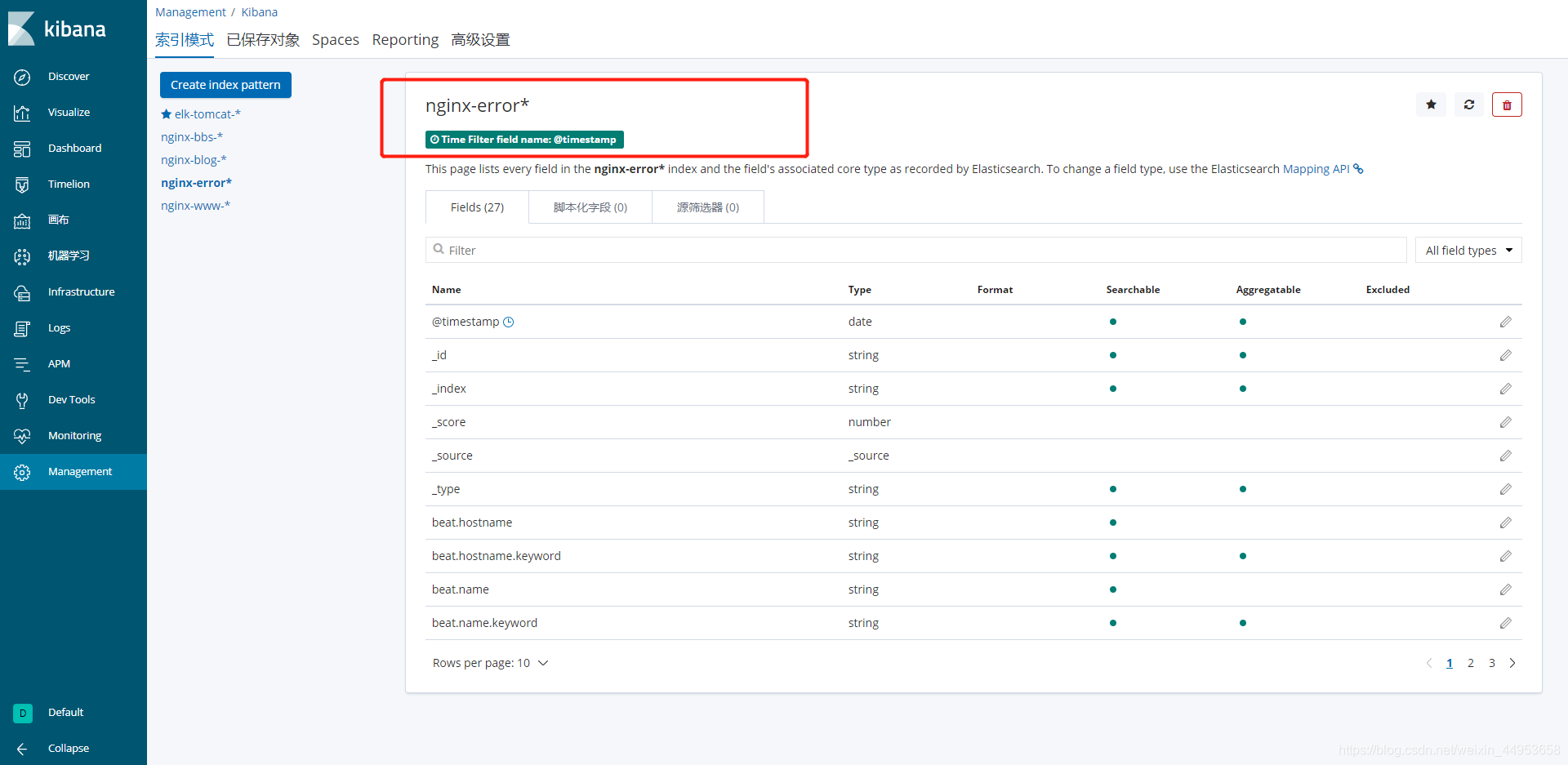filebeat同时收集错误日志与普通日志并存(六)
filebeat收集错误日志并与普通日志并存
只收集正常日志往往是不完整的,错误日志更需要收集起来
1.配置filebeat收集error日志
所有集群都按如下配置,其实就是增加了一个type和一个index
vim /etc/filebeat/filebeat.yml
filebeat.inputs:
- type: log
enabled: true
paths:
- /var/log/nginx/www_access.log
json.keys_under_root: true
json.overwrite_keys: true
tags: ["www"]
- type: log
enabled: true
paths:
- /var/log/nginx/bbs_access.log
json.keys_under_root: true
json.overwrite_keys: true
tags: ["bbs"]
- type: log
enabled: true
paths:
- /var/log/nginx/blog_access.log
json.keys_under_root: true
json.overwrite_keys: true
tags: ["blog"]
- type: log
enabled: true
paths:
- /var/log/nginx/error.log
tags: ["error"]
output.elasticsearch:
hosts: ["192.168.81.210:9200"]
indices:
- index: "nginx-www-access-%{+yyyy.MM.dd}"
when.contains:
tags: "www"
- index: "nginx-bbs-access-%{+yyyy.MM.dd}"
when.contains:
tags: "bbs"
- index: "nginx-blog-access-%{+yyyy.MM.dd}"
when.contains:
tags: "blog"
- index: "nginx-error-%{+yyyy.MM.dd}"
when.contains:
tags: "error"
systemctl restart filebeat
2.查看es是否产生error索引
已经生成

3.在kibana上关联es索引
点击Managerment—索引模式—创建索引

创建成功

4.在kibana上统计错误日志
点击Discovery—选择索引即可查看,根据自己的需求进行统计即可

目录 返回
首页